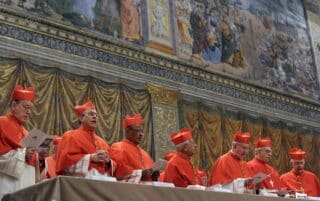After a lull of two years, the Supreme Court finally decided to junk the petition of the Knights of Rizal urging the stoppage of the construction of the 49-story Torre de Manila, otherwise dubbed the “pambansang photobomb.” Based on technicality, the majority of the justices may have a point when they argued that there is really no Philippine law explicitly stating the observance of “sightline” or “visual corridor” when locating buildings near heritage structures. However, I wished they could have pondered more the impassioned arguments of Justice Francis Jardeleza who focused more on the spirit of existing jurisprudence on heritage protection.
The photobomber oppositionists cited the Constitution, laws and agency mandates, but these have been rebutted as vague with regard to the questionable setup. However, they also cited the Manila zoning ordinance provisions of only “a floor-area ratio of 4” (equivalent to a maximum of 16 but small stories) and a recommended institutional land use (e.g., schools and public buildings only) for the zone.
The controversy could have been nipped in the bud at the local government level had the local officials enforced these provisions and exercised prudence in their use of zoning remedies such as variance, exceptions and permits. After a variance was granted, one official justified it in terms of the sizable real estate taxes the project will bring to the city. We don’t know of other factors that were considered.
It may be observed that many aspects of national development are decided at the local government level, particularly in the implementation of the comprehensive land use plan, comprehensive development plan, and zoning ordinance. Crucial to local development is the zoning ordinance since it is the implementing tool of the plans. However, this is the document that is often abused as when deviations are allowed in the form of variances and exceptions from the zoned land uses—sometimes citing frivolous justifications. It is on this aspect where we have to inculcate ethical land use and development practices among our local officials, real estate brokers and planners.
It’s just as well that the photobomber is allowed to be completed and to stand where it is in order to constantly prick the conscience of Filipinos for allowing the hallowed burial site of their national hero to be desecrated by pecuniary interests. In Taiwan, to cite a good example, Filipinos should see how the Taiwanese built and presented Chiang Kai-shek’s monument in an awesome and reverent manner. It is a sad truism in our society that in the conflict between the historical-conservationist and economist-developer schools of thought, it is the latter that often prevails.
Based on the “urbanization cycle conceptual scheme” of urban processes, which conceives of the urbanization, suburbanization and reurbanization stages in the cycle, Manila is now experiencing the reurbanization phase characterized by intensifying urban renewal activities in the city center. In these activities, many of the victims are heritage, cultural and historical structures and sites. An example of this threat is the destruction, in 2000, of the Jai Alai building with its unique Streamline Modern architecture. And the Torre de Manila added insult to injury when it was built on this very site where pelotaris used to play the exciting game brought to us by the Basques of Spain.
The thing for us to do now is to amend the National Cultural Heritage Act and related laws and to be vigilant against heritage destroyers. There is a need for an intensified national information and education campaign, which should be elevated to an even more engaged level through unorthodox advocacy strategies such as the conflict pragmatics espoused by David Alinsky. In these advocacy movement, heroic and heritage place names can be used as semiotic rallying cries that will conscientize heritage desecrators and force them to mend their ways.
Meliton B. Juanico, a retired professor of geography at UP Diliman, is a licensed environmental planner and is active in consultancy work in urban and regional planning.


